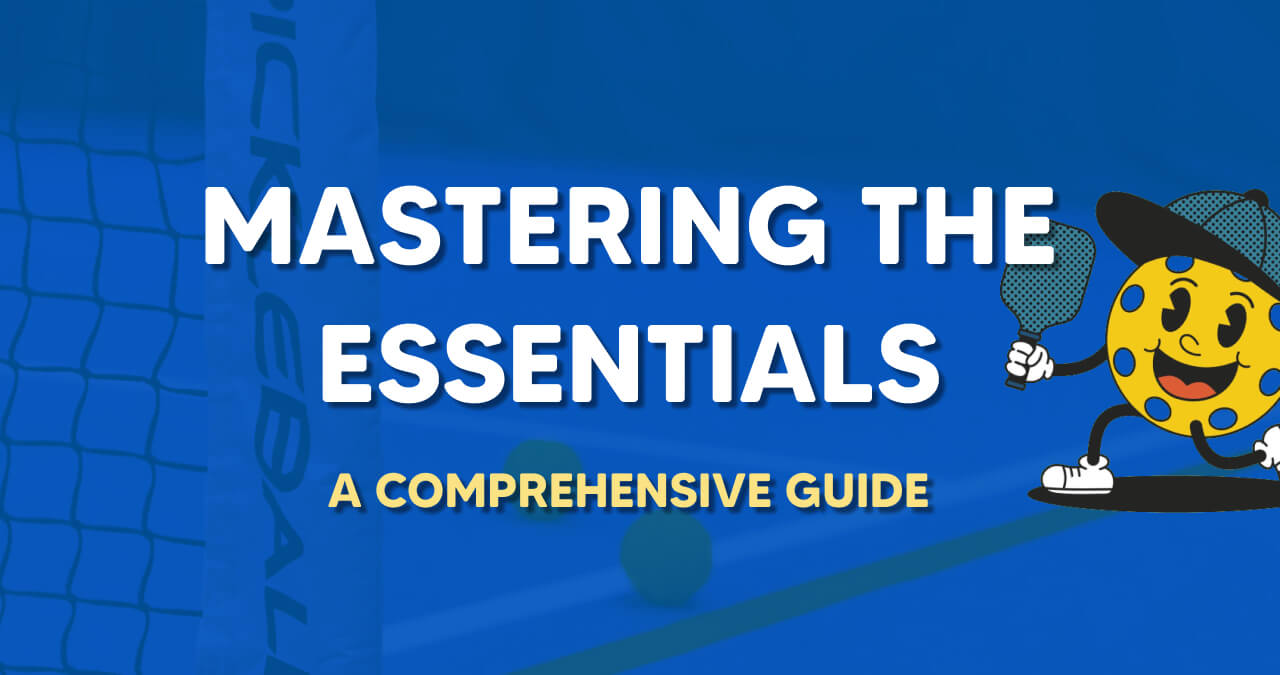Embarking on the exciting journey of playing pickleball requires more than just enthusiasm – you need the right equipment, a solid understanding of the rules, and a zest for strategic gameplay.
Whether you're a beginner or looking to refine your skills, equipping yourself with the essentials will pave the way for thrilling matches on the court. Here's a detailed breakdown of what you need and how to excel in the world of pickleball.
Essential Gear for Playing Pickleball
Before you step onto the court, make sure you're well-prepared with the following gear:
- Pickleball Paddles: The quintessential tool for the game, pickleball paddles come in various designs and materials. Choosing the right paddle that suits your playing style is essential for achieving optimal performance.
- Local Pickleball Court: Find a local pickleball court to engage in matches. The court dimensions are similar to those of a badminton court, measuring 6.09 x 13.41 meters.
- Pickleball Shoes or Trainers: Footwear with proper support and traction is crucial to maneuver effectively on the court. Specialized pickleball shoes or comfortable trainers can enhance your performance and prevent injuries.
- Pickleball Balls: The heart of the game, pickleball balls are designed to ensure consistent play. Having a set of reliable pickleball balls is essential for both practice sessions and competitive matches.
A Step-by-Step Guide on How to Play Pickleball
Understanding the fundamental gameplay of pickleball sets the stage for an enjoyable experience on the court. Let's delve into the core concepts of how to play pickleball:
- Pickleball Court Set Up: Pickleball is typically played on a court measuring 6.09 meters in width and 13.41 meters in length. The net, positioned at 91.44 cm high along the sidelines and 86.36 cm high at the center, separates the teams.
- Players and Positioning: Pickleball is primarily played as doubles, with two players on each team. Players position themselves on the right and left sides of the centerline, ready to engage in dynamic gameplay.
- Two Types of Shots: Players can execute two primary types of shots – groundstrokes and volleys. Groundstrokes involve hitting the ball after it bounces, often from the baseline. Volleys, on the other hand, are shots hit out of the air from a position closer to the net.
- The Non-Volley Zone or "Kitchen": A pivotal aspect of pickleball strategy, the Non-Volley Zone (NVZ) or "Kitchen" is a 2.14 meter area on each side of the net where players are prohibited from hitting volleys. The rule extends to not only volleys but also any part of the body or equipment touching the NVZ during or after a volley.
- Commencement with the Serve: Each point begins with a serve, initiated by the player on the right side of the court facing their opponents. The serve must traverse the Kitchen area, including the line, to be considered valid.
- Underhand Serve Requirement: Serving in pickleball involves an underhand stroke with contact below the waist. The objective of the serve is to put the ball in play, differing from the aggressive overhand serves in tennis.
- Continuation Until a Fault: Gameplay continues after the serve until a "fault" occurs, leading to the conclusion of a point. Three primary types of faults include a serve not clearing the Kitchen, a shot landing out of bounds, and a shot hitting the net.
- No Volleys in the Kitchen: The Kitchen rule mandates that no player can execute a volley while any part of their body is in the Kitchen, including the Kitchen line. This rule prevents players from exploiting the net's proximity for overly advantageous volleys.
- Groundstrokes in the Kitchen: Defensive shots known as dinks, which land in the Kitchen, allow players to enter and hit from this area. Dinks are integral to strategy, providing opportunities to engage in controlled play within the Kitchen.
- Bounce Requirement for Volleys: Before executing a volley, the ball must bounce once on each side. This rule eliminates the unfair advantage of rushing the net and encourages a balanced gameplay strategy.
- Points Only on Your Serve: Points are exclusively scored on your serve, and serving continues until a point is lost. After securing a point on your serve, you switch sides with your partner and serve to the opposing team.
- Both Partners Serve in a Turn: In doubles, each player has a turn to serve. The scoring format involves announcing three numbers – "Zero, zero… two" – indicating the serving order within the team.
- Winning Points and the Two-Point Lead: A team earns victory by reaching 11 points, but a two-point lead is necessary for the win. This rule ensures competitive matches and prolonged gameplay.
Embrace the World of Pickleball with PicklePals
As you delve into the exhilarating world of pickleball, PicklePals stands as the foremost pickleball platform in Australia, ready to elevate your journey.
With comprehensive insights, skill enhancement resources, and a vibrant community, PicklePals offers a space to connect, learn, and excel in the game of pickleball. Equip yourself with the knowledge and gear to embrace this dynamic sport and become a part of the PicklePals community today!
